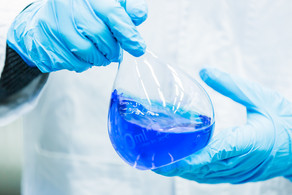New insights into basic structures of ice with amines

In our publication, hydrates of simple tertiary amines (quinuclidine and tetramethylethylenediamine [TMEDA]) with different water contents were isolated as solid-state structures and investigated. By selectively varying the stoichiometric ratio between amine and water, hydrates in the solid state with low and high water content were obtained. The structures range from simple monohydrates to rare, highly hydrated, extended hydrogen bond networks. The order of the water molecules in the crystal correlates with the water content: in the monohydrate (TMEDA·H₂O), individual water molecules link amine residues to form linear chains. Di- and trihydrates of quinuclidine form two-dimensional hydrogen bonds, while the TMEDA heptahydrate shows a three-dimensional network of water molecules with amines included in them.
High data quality and a rigid solid-state structure without disordering enabled in-depth studies using “Hirshfeld atom refinement” - a refinement approach with aspherical scattering factors that allowed deep insights into the nature and geometry of the hydrogen bond networks. The characteristics of the hydrogen bonds could be reproduced with this refinement and their differences highlighted.
Using modern crystal structure analysis techniques, our work provides a deeper understanding of the structural composition, dimensionality and hydrogen bonding situation of water structures with tertiary amines.
Crystal Structures of Water and Tertiary Amines: Hydrates or Ice with a Twist?
A. Schmidt, M. Schöler, T. Szidat, F. Otte, U. Englert*, C. Strohmann* Cryst. Growth Des. 2025, 25, 3644–3653.





